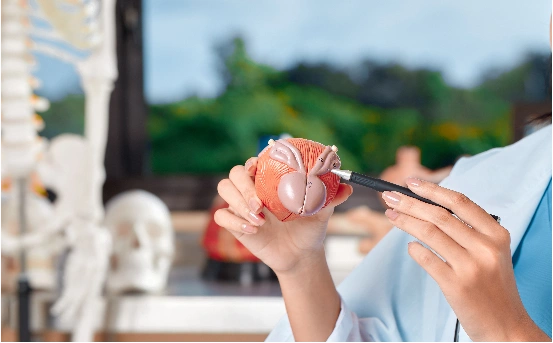What is bladder outlet incision surgery, also known as bladder neck incision (BNI), is a minimally invasive procedure used to relieve urinary obstruction at the bladder outlet the area where urine flows from the bladder into the urethra. This condition, known as bladder outlet obstruction (BOO), can cause significant problems with urination and severely impact a person’s quality of life.
Struggling with weak urine flow, difficulty starting urination, or the constant urge to empty your bladder? These symptoms are more than just inconvenient they could signal a condition known as bladder outlet obstruction (BOO). Left untreated, BOO can significantly disrupt your daily life, cause discomfort, and even lead to long-term damage to your bladder or kidneys. Fortunately, modern urology offers several effective treatments to restore normal urine flow and relieve symptoms. One such solution is Bladder Outlet Incision Surgery, also known as Bladder Neck Incision (BNI).
What Is Bladder Outlet Obstruction?
Bladder outlet obstruction (BOO) is a condition where the flow of urine from the bladder is partially or completely blocked. This blockage can occur due to several causes and leads to symptoms such as :-
-
Difficulty starting urination
-
Weak urine stream
-
Frequent urination
-
Incomplete emptying of the bladder
-
Urinary retention
-
Dribbling or leakage
Common Causes of Bladder Outlet Obstruction
BOO is more common in men than women and may result from :-
-
Benign prostatic hyperplasia (BPH) :- an enlarged prostate
-
Urethral stricture :- narrowing of the urethra
-
Bladder neck contracture :- scarring at the bladder neck, often after prostate surgery
-
Congenital defects in younger males (e.g., posterior urethral valves)
-
Bladder stones or tumors
When medications or less invasive treatments fail to relieve these symptoms, bladder outlet incision surgery may be recommended.
What Is Bladder Outlet Incision Surgery?
Bladder outlet incision surgery is a minimally invasive procedure performed using a cystoscope a thin, lighted tube inserted through the urethra. The surgeon makes one or two small incisions at the bladder neck to widen the passage and allow urine to flow more freely.
This surgery is commonly performed for :-
-
Men with small prostates and significant urinary symptoms
-
Patients with bladder neck contractures
-
Young males with congenital urinary obstruction
-
Individuals for whom medication hasn’t improved symptoms
Unlike transurethral resection of the prostate (TURP), BNI involves cutting but not removing any tissue, making it suitable for specific patient profiles.
When Is Bladder Outlet Incision Surgery Needed?
Your urologist may recommend BNI if you experience persistent symptoms of BOO that interfere with daily life, and other treatment options have failed or are not suitable.
Indications for BNI Surgery
-
Persistent urinary retention
-
Difficulty or pain while urinating
-
Bladder neck contracture post-TURP or prostate surgery
-
Incomplete bladder emptying
-
Urodynamic tests showing obstructive pattern at the bladder neck
Preparing for the Procedure
Preoperative Evaluation
Before surgery, your doctor will conduct :-
-
Medical history and physical exam
-
Urine tests to check for infections
-
Uroflowmetry to assess urine flow
-
Post-void residual (PVR) measurements
-
Cystoscopy or urodynamic studies to visualize the obstruction
How Is Bladder Outlet Incision Surgery Performed?
Step-by-Step Procedure
-
Anesthesia :- The surgery is typically performed under spinal or general anesthesia.
-
Cystoscope Insertion :- A thin instrument is inserted through the urethra to reach the bladder neck.
-
Incision :- Using a small surgical knife or laser, the urologist makes one or two cuts at the bladder neck or prostate area to relieve the obstruction.
-
Catheter Placement :- A urinary catheter may be placed temporarily to aid healing and drainage.
-
Recovery :- The procedure typically takes 30 to 60 minutes.
This is a day-care or short-stay surgery, meaning patients can often go home the same day or after overnight observation.
Benefits of Bladder Outlet Incision Surgery
BNI offers several advantages over other surgical treatments for bladder outlet obstruction :-
-
Minimally invasive :- no external incisions
-
Short recovery time
-
Improved urine flow
-
Effective symptom relief
-
Lower risk of incontinence or erectile dysfunction compared to TURP
-
Safe for patients with small prostates or younger men with congenital obstruction
Risks and Complications
Like any surgical procedure, bladder outlet incision surgery carries some risks, although serious complications are rare.
Possible Side Effects
-
Blood in urine (usually temporary)
-
Mild burning or discomfort during urination
-
Urinary tract infection (UTI)
-
Temporary inability to urinate (may require short-term catheter)
-
Retrograde ejaculation (semen flows backward into the bladder during orgasm)
-
Re-stenosis or recurrence of obstruction (in some cases)
Most side effects are temporary and resolve within a few weeks of surgery.
Recovery After Bladder Outlet Incision Surgery
Hospital Stay and Catheter
-
Most patients stay for a few hours or overnight.
-
A catheter is often placed for 1 to 3 days to allow healing.
-
You’ll be given antibiotics and pain medication as needed.
At-Home Recovery
-
Avoid strenuous activity for 1–2 weeks
-
Drink plenty of fluids to flush the bladder
-
Avoid caffeine, alcohol, and spicy food temporarily
-
No heavy lifting or sexual activity for about 2–3 weeks
-
Follow-up visit with your urologist to monitor progress
Most patients notice improved urine flow within a few days after catheter removal. Full recovery may take 2–4 weeks.
Long-Term Outlook
Bladder outlet incision surgery has a high success rate, especially in younger men and those with mild to moderate obstruction. Many patients experience long lasting relief from urinary symptoms.
However, a small percentage may experience recurrence of symptoms, requiring additional treatment or repeat surgery. Regular follow ups help monitor for recurrence and ensure long-term bladder health.
Alternatives to Bladder Outlet Incision Surgery
Depending on the cause and severity of the bladder outlet obstruction, your doctor may consider :-
-
Alpha-blocker medications (e.g., tamsulosin)
-
Balloon dilation of the bladder neck
-
Botox injection for neurogenic bladder
-
TURP surgery (for large prostate cases)
-
Laser prostate surgery (HoLEP, GreenLight)
The choice of treatment depends on age, underlying cause, prostate size, and overall health.
When to Consult a Urologist?
You should consult a urologist if you experience :-
-
Weak or interrupted urine flow
-
Difficulty starting urination
-
Incomplete bladder emptying
-
Urinary tract infections
-
Frequent urination, especially at night
-
Urinary retention
Early diagnosis and treatment of bladder outlet obstruction can prevent complications like bladder damage, kidney problems, and chronic infections.
Conclusion
Bladder outlet incision surgery is a safe, effective, and minimally invasive solution for relieving urinary obstruction at the bladder neck. It is especially beneficial for patients who cannot tolerate medications or for whom non-surgical treatments have failed.























